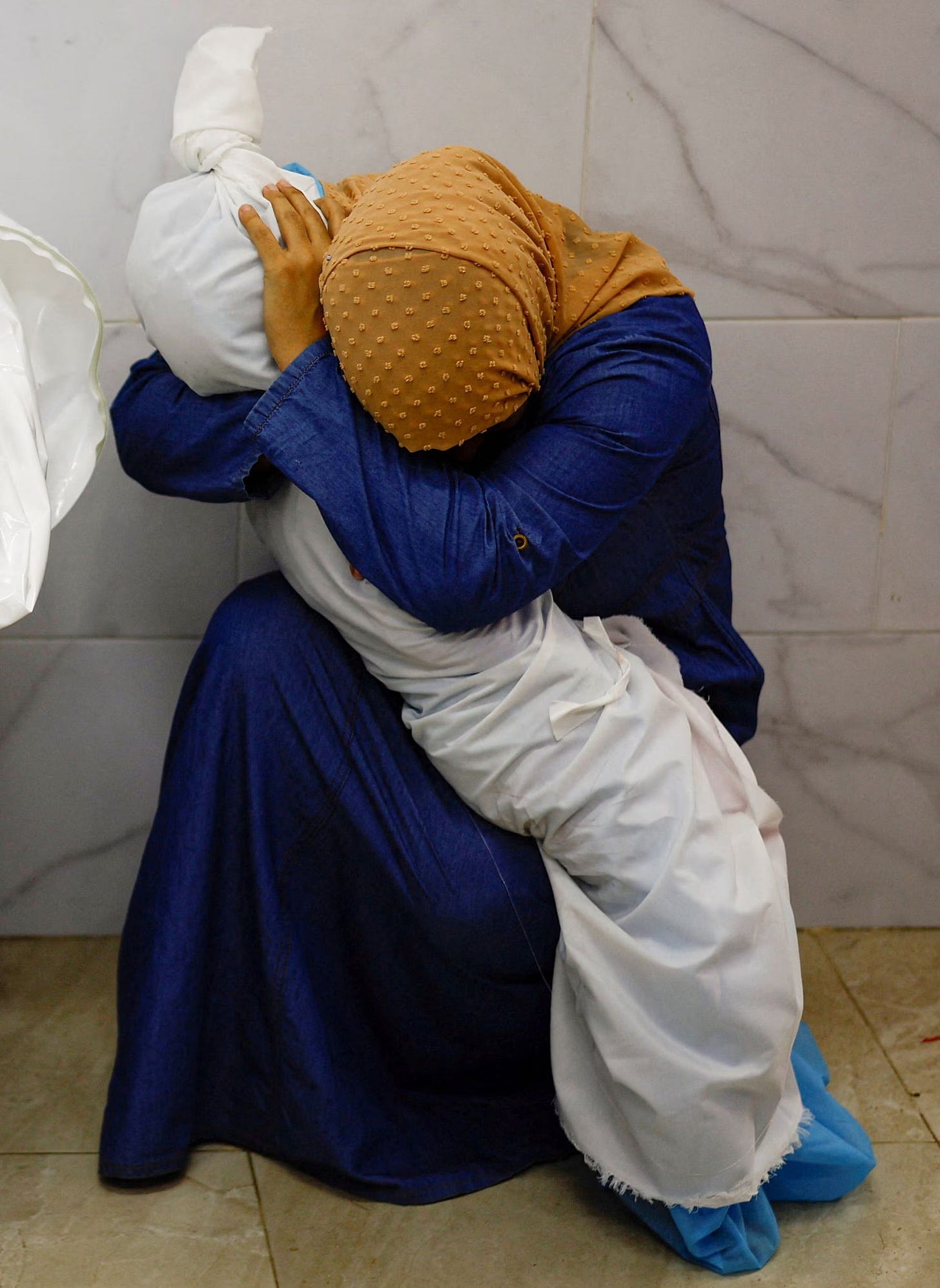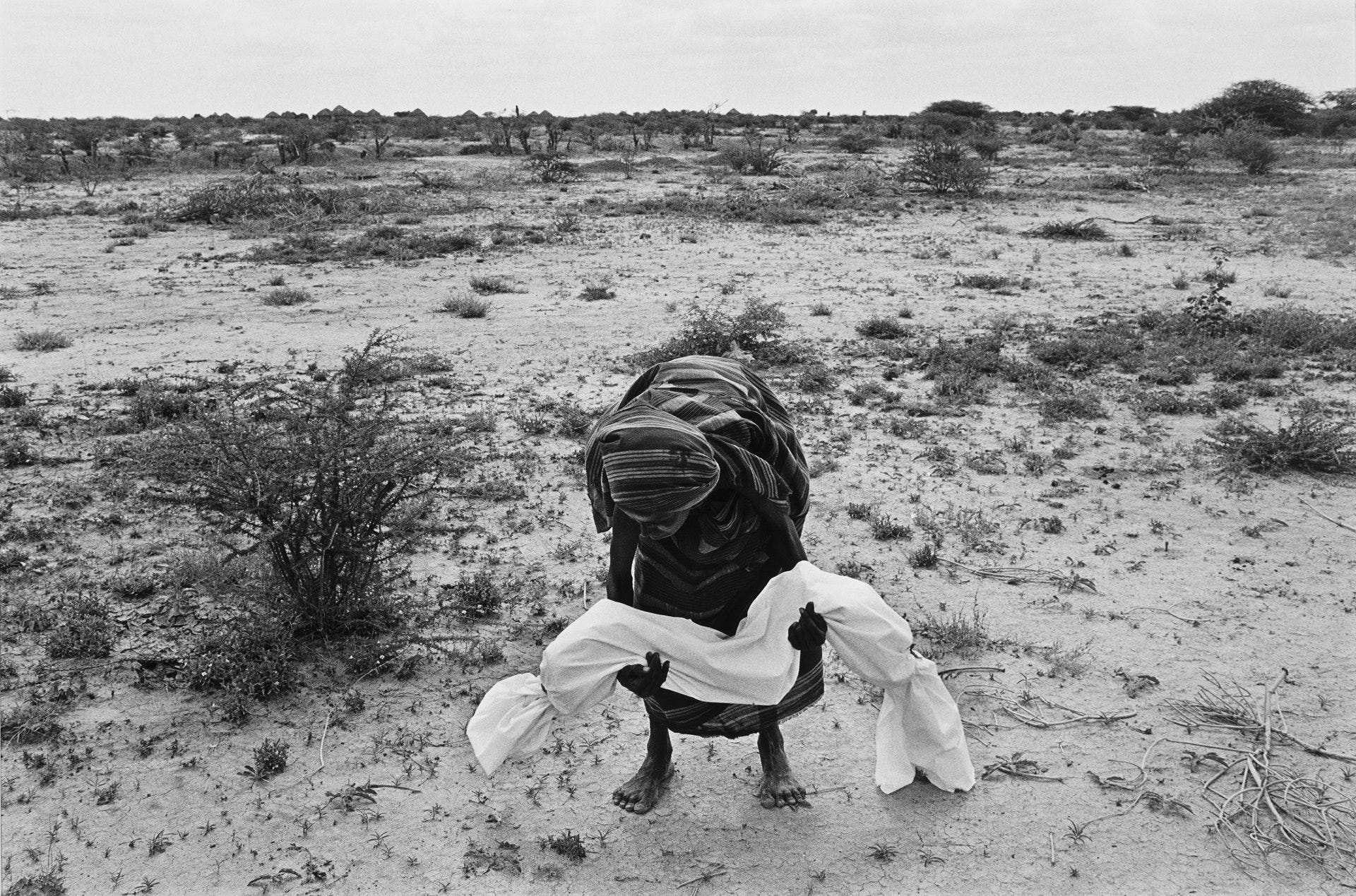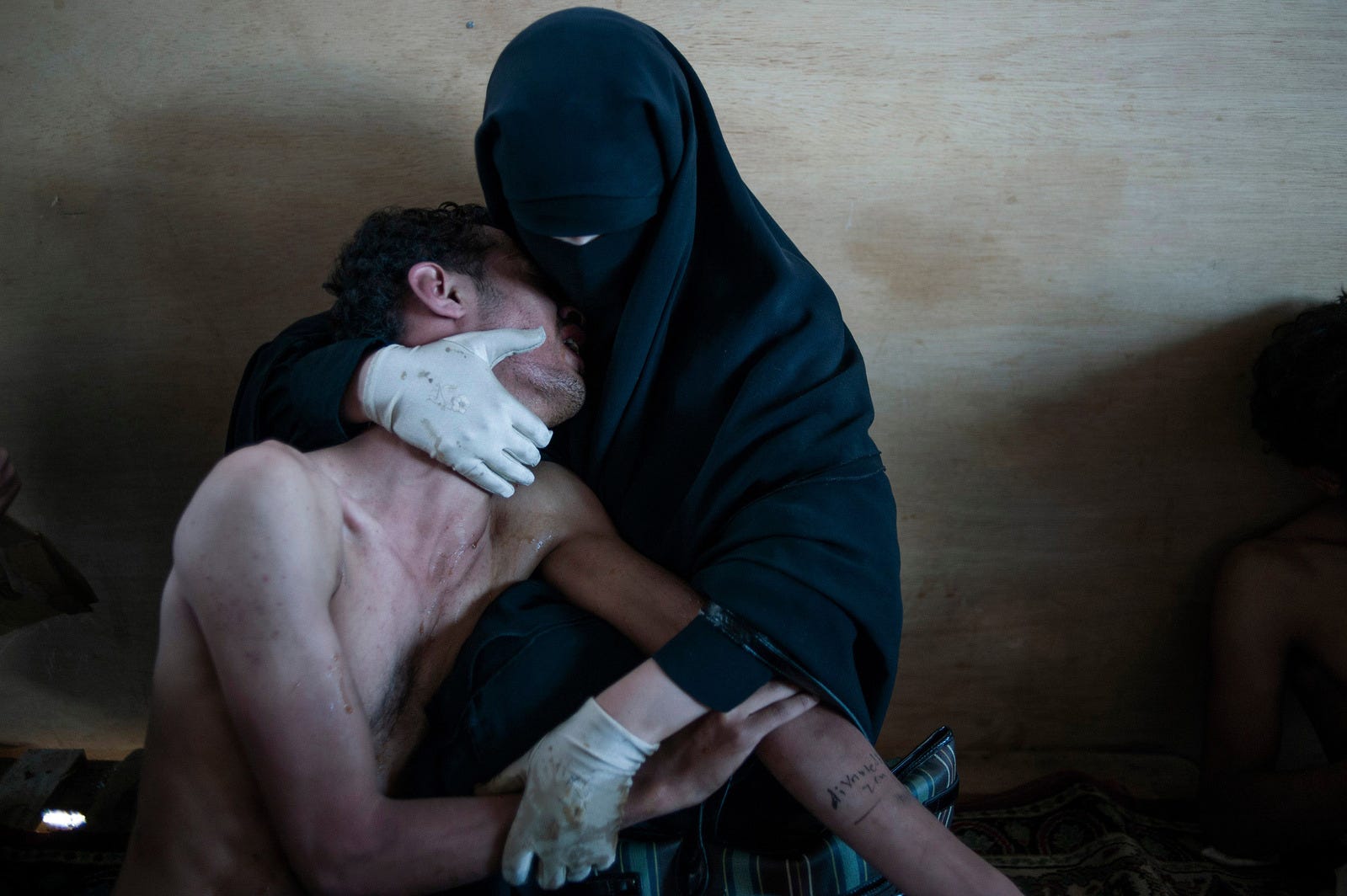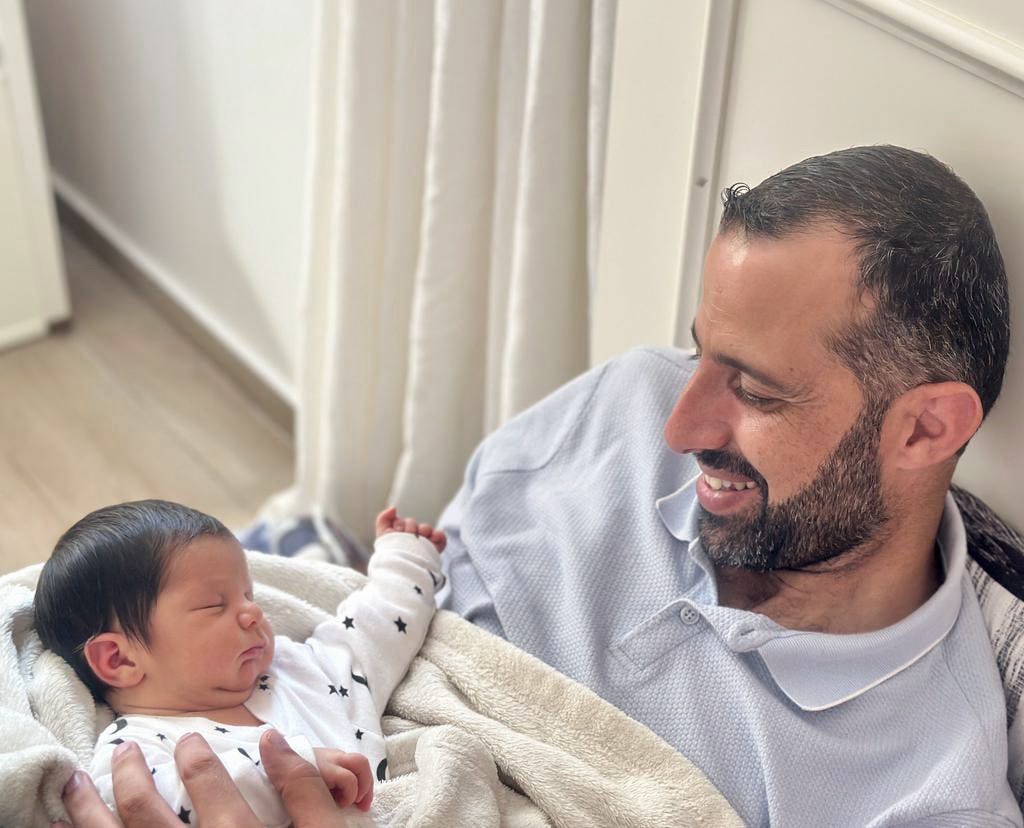The End, and Beginning, of Life in Gaza
"One of the hardest days of my life, sadness and joy at the same time."
An Israeli airstrike killed this woman’s family on October 17, 2023. Palestinian photographer Mohammed Salem captured the devastating moment she cradled her niece, wrapped in a white shroud, at a hospital in southern Gaza.
There are no screaming faces, no smoke or rubble, no blood, no “Sensitive Content” labels — only pain.
“I could not control my feelings the moment the picture was taken,” Salem messaged me.
Miraculously, just a few days before Salem made this photo, his wife gave birth to a baby boy. Salem, a photographer for Reuters, was documenting the aftermath of an Israeli airstrike, when he got the news his wife was going into labor.
“Still wearing a protective flak jacket, [Salem] picked up his wife, Khawla, and drove in his armored vehicle to Gaza City's Al-Sahaba hospital,” Reuters’ Rami Ayyub wrote.
“Being a father and living in Gaza with my family and children, I felt that death was getting very close to us,” Salem said. “This situation still has not left me, not even for a single moment.”
Salem’s photo is beautifully simple, quiet. It could be a statue, a war monument. Gaza’s Pieta.
The aesthetics of war echo throughout history. Salem’s photo evokes memories of others, like this stark image by James Nachtwey.
In 1992, while covering the famine in Sudan for Libération, Nachtwey photographed a mother carrying her child, wrapped in a shroud, to a mass grave. The bleak landscape is critical in Nachtwey’s photo, which was named the World Press Photo of the Year.
Another World Press Photo of the Year, this one by Samuel Aranda, is an even more direct visual reference to Salem’s photo.
While covering protests in Yemen for The New York Times in 2011, Aranda captured this scene of a mother holding her wounded son inside a mosque.
Beyond the obvious Pieta reference, it's the hands in Aranda's photo — the tiny flower on the gloves and the intimate, circular body language — that resonate most with me. It stands as one of the definitive photographs from the Arab Spring.
An argument could certainly be made that the absence of faces dehumanizes these photos. It’s a fair point, but I believe the anonymity in these photos creates an enigmatic, lasting quality that transcends a news cycle or a like button.
They don't tell the whole story; a single photograph rarely can.
A perfect example is this photo Salem sent me of him and his newborn son, Abdallah. You’d never know there’s a war happening outside but it’s…perfect.







Patrick, your Substack is my favorite of all. Every morning when I see a post notification, I prepare myself for a journey - history and humanity, gut wrenching and hopeful storytelling. Through this newsletter, I learned the power of photojournalism. Today's post is exceptional. When I consider the many horrors of war, I always think of the mothers and grandmothers. We don't really need to see their faces to imagine what they are going through - and to contemplate the senselessness of it all, especially when juxtaposed to the joy of holding your baby for the first time.
Thank you again.
The pictures are amazing, they capture the pain and the joy. Excellent story.